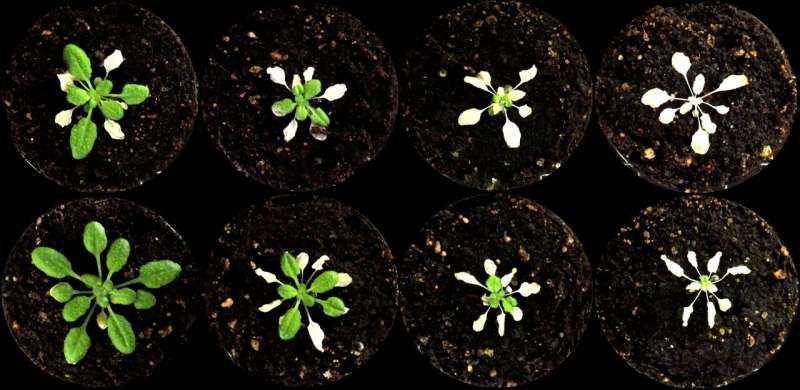Biologists uncover a way to waterproof plants

Scientists at Utrecht University have discovered how some plants can quickly detect that they are under water when flooded, and initiate processes that prevents them from drowning. Floods cause widespread yield losses annually due to the extreme flood sensitivity of most major crops. In a study published in Nature Communications, the researchers demonstrate how plants use the gaseous hormone ethylene as a signal to trigger underwater survival reactions. The identification of this signaling mechanism and the genes involved can potentially pave the way towards stress resilient, flood-proof crops that can sustain yields even under stressful conditions.
Global warming results in the increased incidence of not just drought and heatwaves, but also increased rainfall and higher flood risk. This is a major problem for crops. Just like humans, plants need oxygen to survive and the lack of it underwater causes them to suffocate. The devastating agricultural impact of floods is therefore just as immense as other extreme weather events such as drought. For instance, flooding of a potato field can cause complete yield loss within just 24 hours. It is therefore absolutely essential to understand plant resilience mechanisms in order to progress towards flood resistant crops. This can make a world of difference with regards to food security and mitigating major economic losses.
Survival response
"If plants can quickly detect that they are flooded, they can initiate processes that increase their chances of survival. One strategy, for example, is the so-called snorkel response, in which leaves and stems increase upwards growth to emerge from the water and restore contact with air. Another strategy is to suppress growth and metabolism in order to minimize oxygen and energy consumption until the floods recede," says first author Sjon Hartman, plant biologist at the Plant Ecophysiology group at Utrecht University. "We recently demonstrated that the gaseous plant hormone ethylene plays a very important role in this. Ethylene entrapped in the cells of flooded plants serves as a flood signal for the plant."
Together with colleagues from Nijmegen, Denmark, the United Kingdom and the U.S., the researchers now report their findings in Nature Communications, and describe the series of molecular events that are triggered upon a flood in plants and the genes involved. They demonstrate that ethylene accumulation in flooded plants triggers a survival response in the plants at an early stage, even before the oxygen levels actually drop. "This is very useful: a plant that goes into survival mode early can last longer under water and that can make the difference between life and death," says Hartman.
Future-proof crops
The discovery of this tolerance mechanism holds great potential for the future development of flood-tolerant crops. "Now that we know the genes associated with flooding survival, we can introduce them back into plants that lack them and thus program flooded plants to go into survival mode sooner," say research leaders Dr. Rashmi Sasidharan and Prof. Rens Voesenek of Utrecht University. "This will enable us to make future-proof crops that are better able to withstand flooding."
More information: Sjon Hartman et al. Ethylene-mediated nitric oxide depletion pre-adapts plants to hypoxia stress, Nature Communications (2019). DOI: 10.1038/s41467-019-12045-4
Journal information: Nature Communications
Provided by Utrecht University Faculty of Science




















